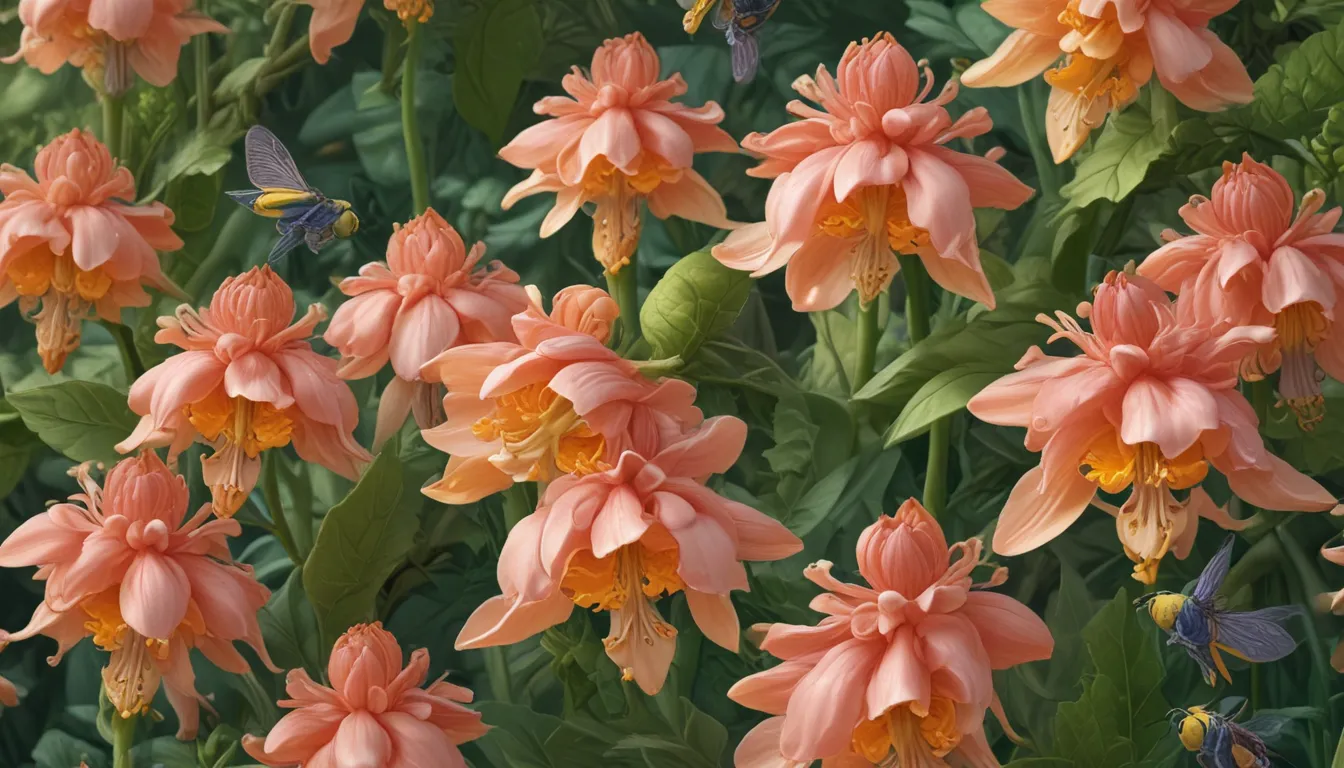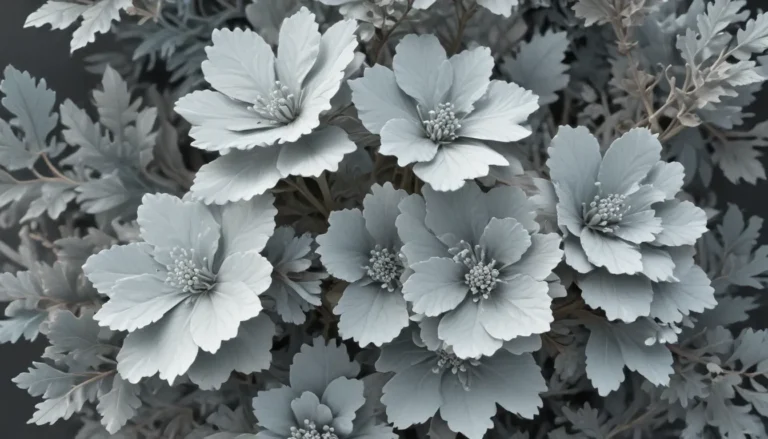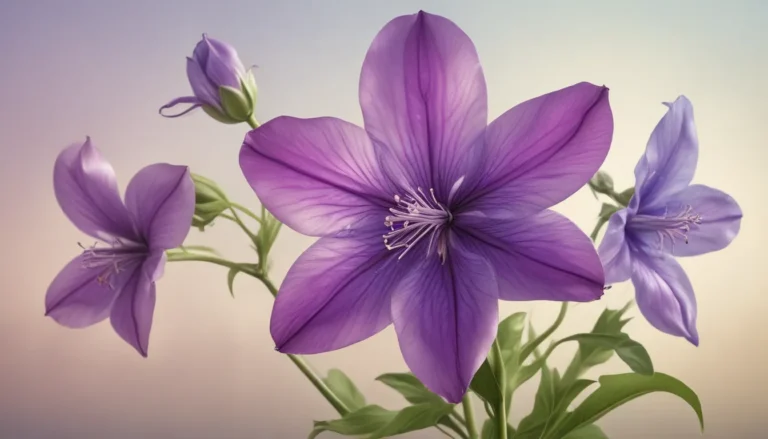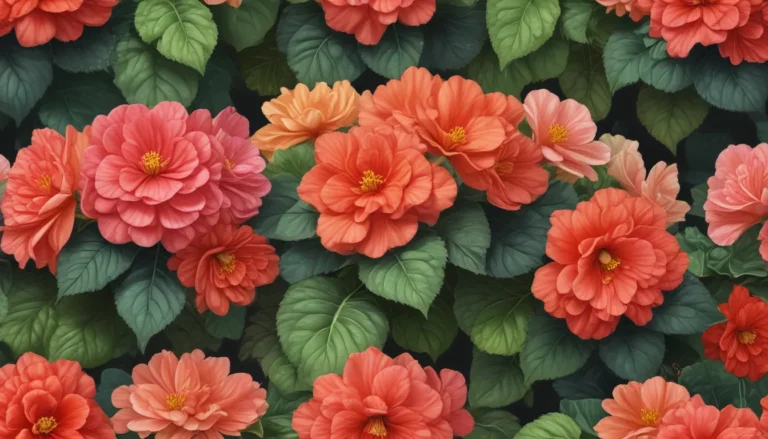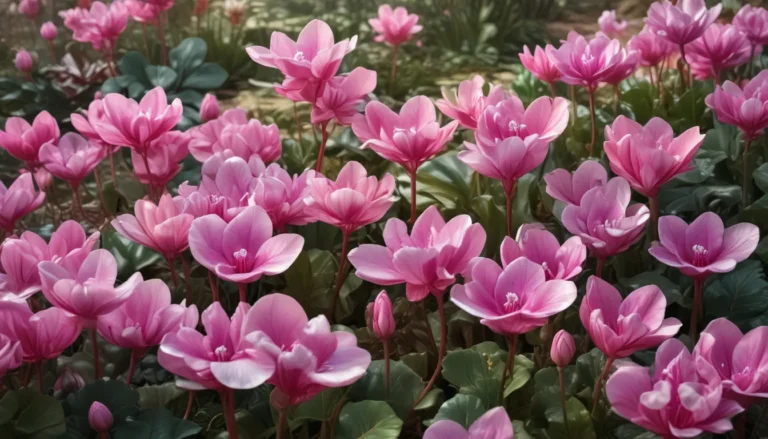The pictures we use in our articles might not show exactly what the words say. We choose these pictures to make you interested in reading more. The pictures work together with the words but don’t take their place. The words still tell you the important facts.
Are you fascinated by the beauty of plants and the secrets they hold? If so, you're in for a treat with the remarkable Honeywort, also known as Cerinthe Major. This unique plant has been captivating garden enthusiasts for centuries with its stunning blue-purple flowers and succulent foliage. But there's more to Honeywort than meets the eye. In this article, we will delve into 12 fascinating facts about Honeywort that will not only spark your curiosity but also deepen your appreciation for this extraordinary plant. From its historical significance to its medicinal properties, Honeywort is a plant that truly deserves to be celebrated. Join us as we explore the wonders of Honeywort and uncover the enchanting world it has to offer.
Unveiling the Beauty of Honeywort
Honeywort, also known as Cerinthe Major or Blue Wax Flower, is a unique annual flowering plant that belongs to the family Boraginaceae. Its vibrant blue-purple flowers and succulent-like leaves make it a distinctive addition to any garden. Native to the Mediterranean region, particularly in countries like Italy, Greece, and Turkey, Honeywort thrives in warm climates and is well-adapted to dry, sandy soils.
The Sweet Nectar of Honeywort
One of the striking features of Honeywort is its rich nectar production, which makes it a favorite among bees, butterflies, and other pollinators. The tubular-shaped blossoms of Honeywort serve as a convenient landing pad for these insects, attracting them with its sweet fragrance and abundant nectar.
Culinary Delight: Edible Flowers
Surprisingly, Honeywort's flowers are not just a feast for the eyes but also for the palate. With a subtle, sweet flavor, these edible flowers can be used as a decorative addition to salads, desserts, and even cocktails, adding a unique touch to culinary creations.
Resilient and Versatile: Drought-Tolerant Plant
Honeywort is known for its resilience in drought conditions, thanks to its fleshy leaves that help retain moisture. This feature allows the plant to thrive in dry environments with minimal watering, making it a low-maintenance and versatile addition to any garden.
A Haven for Beneficial Insects
The vibrant flowers of Honeywort act as a magnet for beneficial insects such as hoverflies and parasitic wasps. These insects play a crucial role in controlling pests in the garden, making Honeywort not only a visually appealing plant but also a valuable companion in organic gardening.
Easy to Grow, Easy to Love
Whether you're a novice gardener or a seasoned expert, Honeywort is a plant that is easy to grow and love. It can be grown from seeds with minimal maintenance once established, making it a perfect choice for those looking for a hassle-free addition to their garden.
Self-Seeding Beauty
Once Honeywort flowers and sets seeds, it exhibits a remarkable ability to self-seed and produce new plants, ensuring its presence in your garden year after year. This self-seeding feature adds to the charm of Honeywort, making it a perennial favorite for many gardeners.
Ornamental Elegance
Beyond its vibrant flowers, Honeywort also boasts ornamental value due to its unique foliage. The bluish-green leaves with a waxy texture give Honeywort a visually appealing appearance, adding an elegant touch to any garden or floral arrangement.
Medicinal Marvel: Healing Properties
Honeywort has a rich history of medicinal use in traditional herbal medicine. Believed to have anti-inflammatory properties, Honeywort has been used to alleviate symptoms of arthritis and other inflammatory conditions, showcasing its healing potential beyond its beauty.
Symbolism and Tradition
In folklore, Honeywort is associated with various symbolic meanings, often seen as a symbol of good luck, transformation, and protection. These symbolic associations have made Honeywort a popular choice for rituals and ceremonies, adding depth and meaning to its already captivating presence in gardens.
A Delight for Hummingbirds
The tubular flowers of Honeywort not only attract bees and butterflies but also delightful hummingbirds with their sweet nectar. Witnessing these tiny birds hover around the plant adds a magical touch to any garden, creating a harmonious ecosystem that celebrates nature's wonders.
Embracing the Beauty of Honeywort
In conclusion, Honeywort is a plant that embodies nature's beauty, resilience, and healing properties. Whether you choose to grow it in your garden or simply admire it in the wild, Honeywort is sure to captivate your senses and inspire a deeper appreciation for the natural world. Its ability to attract beneficial insects, its culinary uses, and its potential medicinal benefits make Honeywort a truly remarkable plant worth celebrating and nurturing.
Unveiling the Mysteries: Frequently Asked Questions
-
What is Honeywort?
Honeywort, also known as Cerinthe Major, is a flowering plant native to the Mediterranean region, characterized by its blue-green leaves and vibrant blue flowers. -
How tall does Honeywort grow?
Honeywort typically reaches a height of about 1 to 2 feet (30 to 60 cm), although it can occasionally grow up to 3 feet (90 cm) under favorable conditions. -
Does Honeywort attract bees and other pollinators?
Yes, Honeywort is highly attractive to bees, butterflies, and other pollinators due to its sweet fragrance and nectar-rich flowers, making it a valuable addition to pollinator-friendly gardens. -
Can Honeywort be grown in containers?
Yes, Honeywort can thrive in containers, making it a suitable choice for those with limited garden space. Ensure the container has proper drainage and provide regular watering and sunlight. -
Is Honeywort edible?
Yes, both the flowers and young leaves of Honeywort are edible, adding a mild and slightly salty flavor to salads and other culinary creations. -
Does Honeywort have any medicinal properties?
Honeywort is believed to have anti-inflammatory and diuretic effects, with traditional uses in treating respiratory ailments and skin conditions. -
How do I propagate Honeywort?
Honeywort can be propagated through seeds or stem cuttings, with seeds sown directly in the garden and stem cuttings rooted in moist soil. -
Is Honeywort a perennial or annual plant?
Honeywort is typically grown as an annual plant, but in mild climates, it may behave as a short-lived perennial. -
What are the ideal growing conditions for Honeywort?
Honeywort thrives in full sun to partial shade and well-draining soil, tolerating drought and heat, making it ideal for dry or Mediterranean-style gardens. -
Is Honeywort deer resistant?
Yes, Honeywort is considered deer resistant, with its fuzzy foliage and pungent scent deterring browsing animals. -
What companion plants go well with Honeywort?
Honeywort complements plants like lavender, roses, and salvias, as well as early spring bulbs such as daffodils and tulips, creating harmonious and beautiful garden settings. -
Can Honeywort be used in floral arrangements?
Absolutely! Honeywort's unique blue flowers make it a lovely addition to floral arrangements, enhancing bouquets and centerpieces with its long-lasting blooms and attractive foliage.
Embracing Nature’s Wonders
Investigating the enchanting world of Honeywort reveals nature's marvels, from its vibrant blooms to its healing properties. The interaction with beneficial insects and wildlife showcases the interconnectedness of all living beings in a garden ecosystem. Exploring and appreciating ornamental plants like Honeywort allows us to celebrate the beauty and resilience of the natural world, inspiring a deeper connection with the wonders that surround us.
Your Support Matters
Our commitment to providing accurate and engaging content is paramount, with each fact on our platform contributed by individuals like you, bringing a diverse range of insights and information. Our dedicated editors ensure the highest standards of accuracy and reliability in every submission, guaranteeing that the facts we share are not only fascinating but also trustworthy. Join us on this journey of discovery and learning, trusting in our dedication to quality and authenticity as we explore the wonders of the natural world together.
